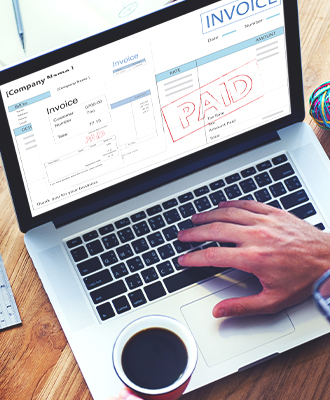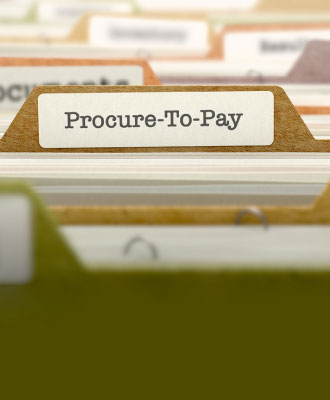In order to maintain profitability, encourage growth, and compete effectively, both small businesses and large companies need reliable and accessible tools for managing their expenses. Tools such as the aged accounts payable report give businesses a clear and concise overview of their expenses so they can monitor their outstanding expenses and effectively balance cash flow while preserving both a healthy bottom line and positive relationships with their suppliers.
What is an Aged Accounts Payable Report?
Also known as the accounts payable aging report or simply the AP aging report, the aged accounts payable report is one of several generated as part of general accounts payable reporting. It provides a record of the balances owed to your suppliers, organized by specific creditor, the amount owed, and how long the balance has been outstanding. This report is used during monthly reconciliation of the general ledger, when the journal entries in your AP system are matched against the accounts payable account and adjusted accordingly to ensure all your records are accurate and complete.
The aged accounts payable report is a useful tool because it provides at-a-glance visibility into your debts. It allows you to create a strategic plan for meeting your obligations and maintaining friendly and professional supplier relationships while still maintaining enough working capital to address emergencies and take advantage of investment opportunities.
Most aged accounts payable reports use the same simple format. The first column lists suppliers owed. The second through sixth columns detail the specific amounts owed to each vendor, broken into five discrete aging periods (30-day intervals) based on the age of each supplier invoice:
- Amounts owed for current invoices (0 to 30 days past receipt; not past due)
- Amounts 30 to 60 days past due
- Amounts 31 to 60 days past due
- Amounts 61 to 90 days past due
- Amounts more than 90 days past due
The seventh and final column is used to record the total amount owed to each vendor.
Note: Not all vendors base their payment terms on 30-day increments. Make sure your bookkeeping approach includes careful review of the number of days in each supplier’s credit terms.
By providing a running total of current amounts and aged balances owed to individual suppliers as well as the total balance owed to all of them, the AP aging report helps you prioritize repayment to meet your specific goals for maintaining cash flow and supplier relationship management.
It also simplifies budgeting by providing historical data on spending and debt management. You can identify and mitigate or end an overdependence on credit (particularly if the supplier’s credit terms dictate hefty fees), for example, or seize an opportunity to renegotiate better payment terms if you’re habitually making early payments to certain suppliers.
The AP aging report is the AP equivalent of an accounts receivable report known as the accounts receivable aging report (also called the aged accounts receivable report or AR aging report). Like the aged accounts payable report, the AR aging report covers outstanding balances, but records current amounts owed by customers to a business, plus any credit you may have extended.
“By providing a running total of amounts owed to individual suppliers as well as the total owed to all of them, the AP aging report helps you prioritize repayment to meet your specific goals for maintaining cash flow and supplier relationship management.”
Sample Aged Accounts Payable Report
While every organization has its own unique needs and goals with regard to managing cash flow and business expenses, examining a sample aged AP report can provide you with a general feel for the process.
Let’s take a closer look at a sample report:
| VENDOR | CURRENT | >30 DAYS | 31-60 DAYS | 61-90 DAYS | 90< DAYS | TOTAL |
| Local, Inc. | $45.00 | $175.00 | $35.00 | $255.00 | ||
| XYZ Co. | $78.00 | $62.00 | $140.00 | |||
| K.B. Widgets | $490.00 | $87.00 | $310.00 | $887.00 |
Prioritizing repayment might seem as simple as knocking out the biggest outstanding balances first. But not every vendor has the same payment terms, and invoices with the earliest due date might not be the same as those with the longest aging period in your accounting system.
Paying smaller bills that have been overdue longer can provide greater value and return on investment (ROI) in the long term by preserving important vendor relationships—and avoiding costly fees and penalties. Conversely, you can improve your cash flow significantly if you take advantage of a supplier’s early payment incentives in the form of either direct or tiered discounts.
Using Your Accounts Payable Aging Report
Your aged AP report is only as useful as the accuracy and completeness of the data used to create it. By following a few simple tips, you can be sure you’re using your AP aging report properly and have complete and transparent payables data you can rely on for strategic decision making and cash flow management.
- Regularly update your aged accounts payable report. Ensure every invoice received is properly recorded, and every invoice paid is removed from the report. Ensure invoices are properly sorted by aging period.
- Be aware of your suppliers’ credit terms. Your reporting may be more complex than our example if your suppliers have a wide array of credit terms using unusual time frames. It’s crucial to accommodate all your suppliers in order to have accurate information for budgeting and planning, but don’t overlook opportunities to renegotiate terms where appropriate to streamline the process and remove outliers.
- Invest in accounting software with AP management tools. Implementing a comprehensive, cloud-based, and automation-powered software solution such as PurchaseControl will greatly simplify your bookkeeping.
- Centralized data collection and management ensures all your spend data is captured and available for real-time analysis. Good data in, powerful insights out.
- Analytics help you generate and review accurate accounts payable reports to streamline your supply chain, secure better payment terms, spend more strategically when placing supplier orders, and track spending and cash flow to balance return on investment against preservation of working capital.
- Vendor management tools ensure supplier terms are always up to date.
- Native integration with your existing accounting system brings automation and continuous improvement to all your accounting and business processes.
Monitor and Optimize Your Expenses with the Aged Accounts Payable Report
Knowing what you owe, to whom you owe it, and when it’s due is simply good business. By prioritizing high-quality data and using the right tools, you can make sure your aged accounts payable report is always up-to-date and accurate. You’ll have the information you need to keep your bank account in the black, cover your business expenses, and maintain good terms with your suppliers.
Track Your Business Expenses and Maintain Healthy Cash Flow with AP Tools from PurchaseControl
Find Out How








